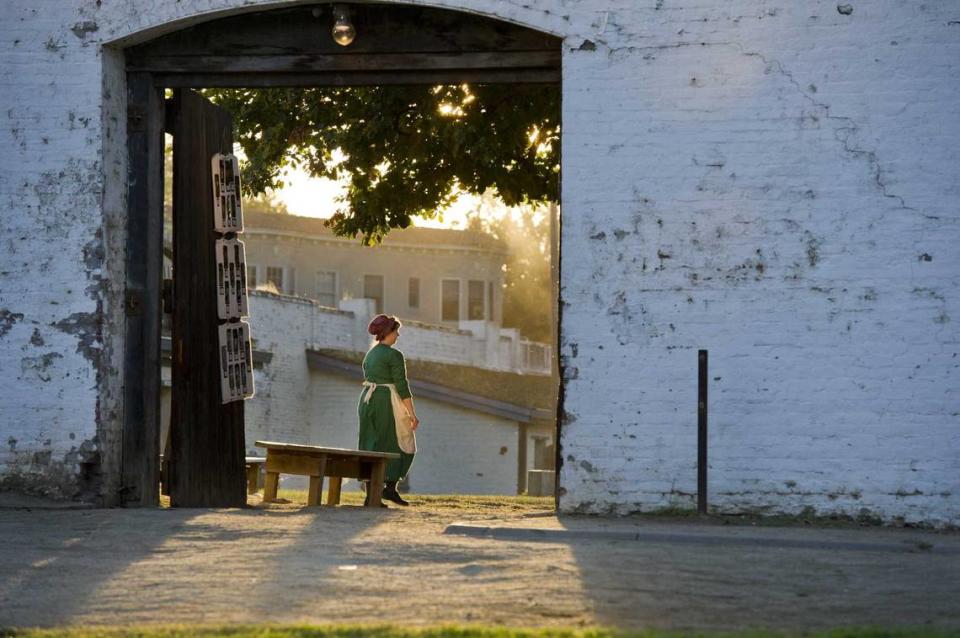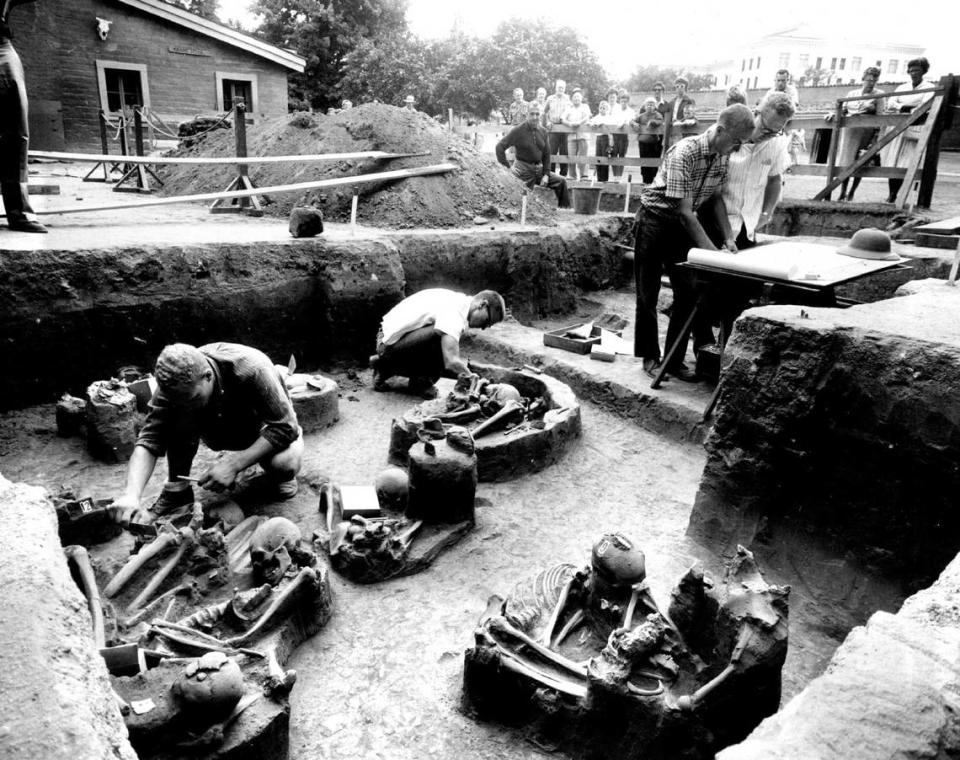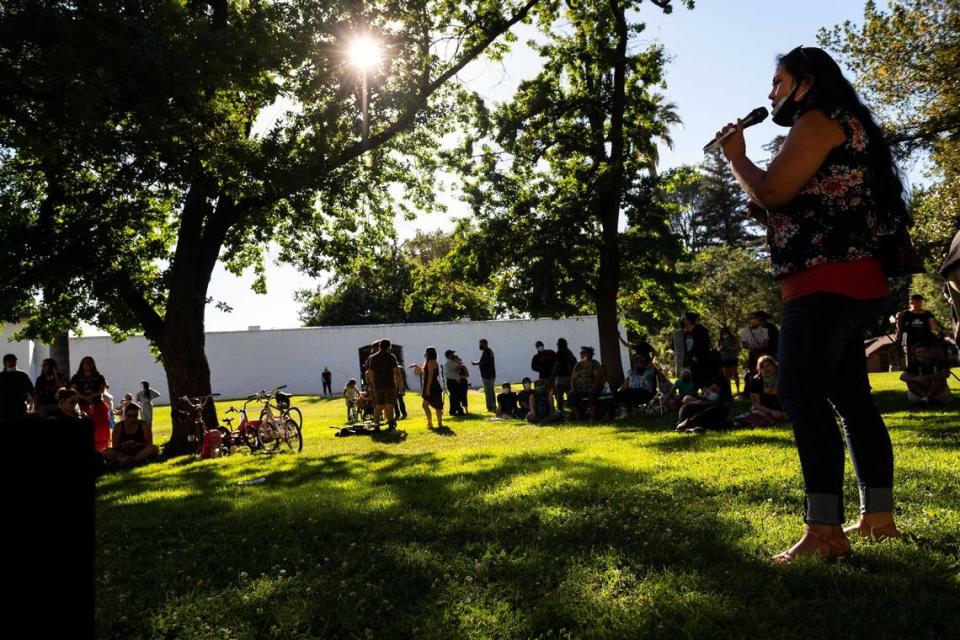Changes are coming to Sutter’s Fort. While the name and space of the downtown monument will not change, the substantial role that Native Americans played — and how they were treated by European settlers — will be first taught at the site where Sacramento and California first took root.
The commission that oversees California’s Department of Parks and Recreation approved a plan Tuesday that will adapt the content of educational materials, tours and other guides at Sutter’s Fort State Historic Park to include the history and perspectives of Native Americans.
The changes were approved unanimously on a 6-0 vote after commissioners heard the latest feedback from State Parks officials, historians and members of Northern California Native American communities at their meeting in West Sacramento.
John Fraser, the superintendent of the State Parks’ Capital District, which manages eight museums and parks in the Sacramento region, said he was pleased with the approval of the plan, which had been in the planning stages since September. He said district officials have been working with tribal communities to draft an amendment to the fort’s general plan that outlines the park’s goals to educate the public about its history.
The original 1990 General Plan made little mention of the indigenous communities – including the Miwok and Nisenan communities – who called the land home before the war. Johannes Sutter‘s arrival in California in 1839. According to a new interpretation master plan, codified in an 80-page document, much of the park’s educational and interpretive approach will provide a more “inclusive, complex and accurate history of Sutter’s Fort’s role in reflect colonization’. of California.”
Fraser said there has been a push across the state in recent years to reevaluate the perspectives displayed in California’s historical and educational institutions.
“There are too many stories that haven’t been told yet that need to be told,” he said.

State Parks sought input from tribes for a plan
The effort to revive historical accuracy and context began in response to the global movement for racial equality in 2020, in the wake of the police killing of George Floyd. That movement grew into the removal of statues across the country depicting racist and problematic historical figures, such as the removal of the statue of John Sutter across from the fort on the grounds of Sutter Health.
Sutter’s monument was one of several statues in the city’s core to be removed from white settlers and settlers — along with the likeness of Spanish missionary Junipero Serra in Capitol Park and the Capitol Rotunda statue of Queen Isabella and Christopher Columbus.
The State Parks Capital District worked with tribal leaders to understand what lessons were important to today’s tribes and what the public could learn about a complex history, Fraser said.
That includes “the reality of colonization,” which a state analysis called “dark, uncomfortable and unpleasant.”
“People have exploited other people using power, force and violence. …The effects of these racial dynamics created significant distortions in the way California history has been researched and presented at places like Sutter’s Fort,” the analysis concluded. “The fort’s previous principles of interpretation too often failed to provide an accurate picture of California life and culture in the 1840s.”


Officials said the fort would become a “laboratory of learning” dealing with the subject of indigenous labor within and around the fort and the oppression of indigenous people that continued well after Mexican rule as far back as the state of California in 1850.
Officials said the plan would explain how the settlers and the fort “catalyzed a pattern of change in California, leading to the introduction of diverse immigrant communities, disruption of native life and ultimately a forced convergence of cultures that affects current relations in California .”
“This happened because the indigenous people in the region made it possible,” Fraser said. “It was their call for change that prompted us to take this action.”
‘Appropriate place to provide accurate education’
What won’t be lost is the fort’s name or Sutter’s contributions to the founding of the state, even if they are considered controversial. Fraser said the State Parks Capital District will continue to evaluate and adjust the plan as it is rolled out.
Goals for the park include fostering an environment that encourages learning history from diverse perspectives, connecting with the public through extensive outreach efforts, and educating the public about the legacy and impacts of Sutter’s Fort.
Representatives of the Shingle Springs Band of Miwok Indians, Parks California, the California League of Parks Associations and the office of Sen. Angelique Ashby, D-Sacramento, publicly expressed support for the changes.
“Parks are truly a keeper of history,” said Jeff Kish, vice president of programs at Parks California, a nonprofit partner of California State Parks. “To make California’s parks more welcoming and inclusive, we must first recognize the historical contributions of people often left out of narratives, including tribes, women and communities of color.”


Racism and harassment still occur today
During the meeting, members of the Native American community talked about how past experiences were shaped by that lack of understanding.
“This movement is more than I have seen in my lifetime,” said Calvin Hedrick, executive director of 5th Direction, a Sacramento-based program that works with Native youth. Hedrick, who is of Mountain Maidu heritage, was part of the effort last year to rename Miwok Middle School and Suy:u Elementary School. He gave presentations to staff, parents, community members and alumni to emphasize the importance of changing school names for Native American communities.
“I just read from the books of people who were here at the time,” Hedrick said. “That’s all I had to do. … Not a single person who faced adversity stepped up to say anything.
Anthony Burris, an assistant professor of ethnic studies with a focus on Native American studies at Sacramento State, shared examples of harassment he has faced throughout his life because of his heritage. Burris, who goes by Miwok, said that at the age of 9, neighborhood children called him racial slurs and made fun of him for his cultural practices.
“Four months ago – in 2024 – a cousin approached me at one of our tribal gatherings,” he said. “Her daughter was violently harassed by other students because of her Miwok identity and little was done by those responsible.”
Sutter’s Fort’s plan will begin with the creation of an advisory committee, made up of Indigenous representatives, to review new interpretation services. That could include partnerships with local universities in creating new self-guided and group tours aimed at creating a “platform for historically significant cultural groups to share their history with the community.” The plan specifically mentioned “Native Californian and Native American tribes, as well as those of Hawaiian, Mexican, Spanish, and Russian backgrounds, among others.”
Burris said State Parks efforts to highlight Native American history throughout California are “critical” to addressing systemic racism against Native Americans and other marginalized communities in the state.
Burris emphasized the importance of teaching Native history and said the courses he teaches at Sac State are often the first time many of his students have learned about the history of Native Americans in California.
“Sutter’s Fort is an obvious and most appropriate place to provide accurate education to the local Nisenan and Miwok people and to highlight their historical experiences with this monument and the man whose name it bears.”







